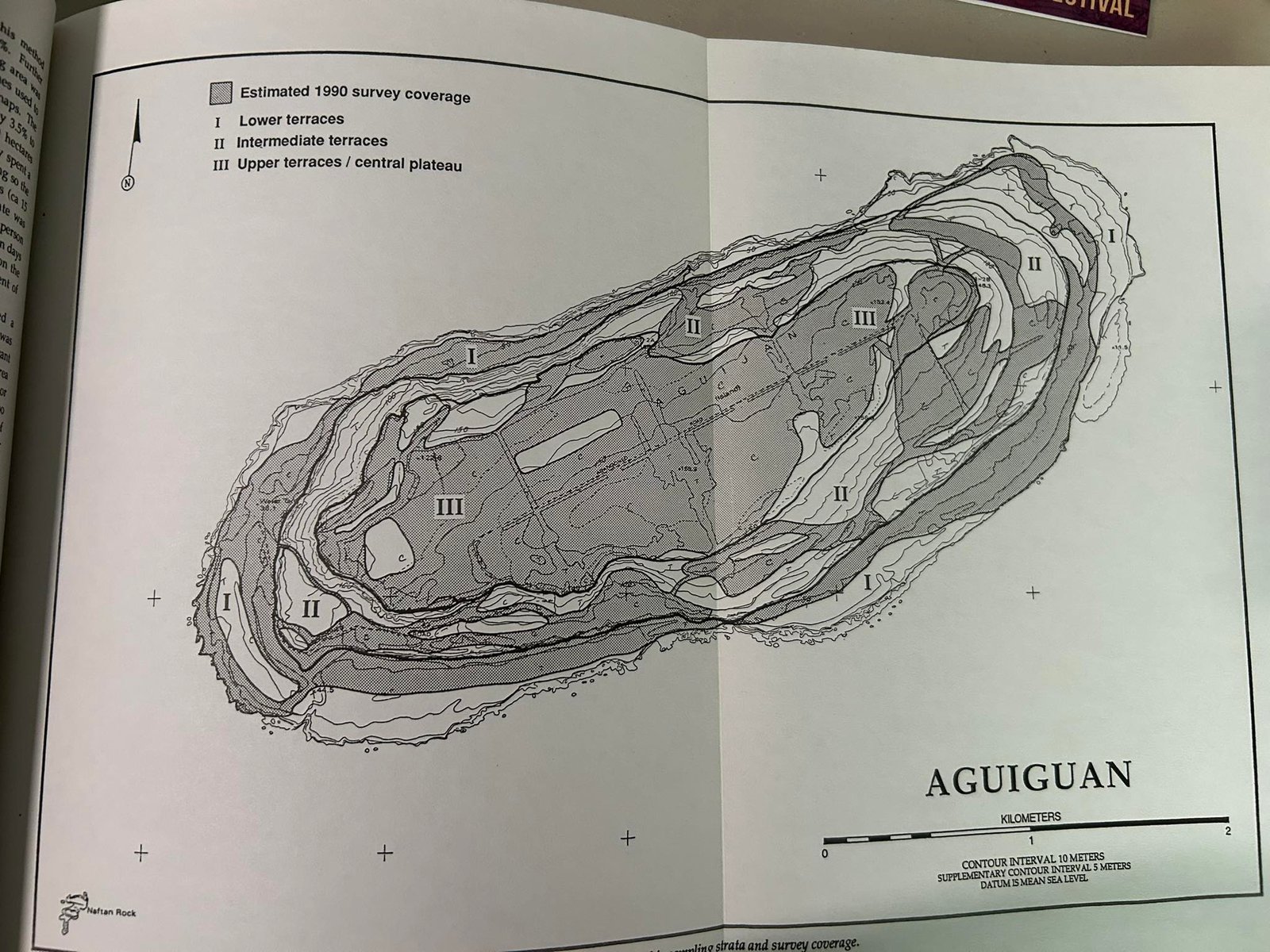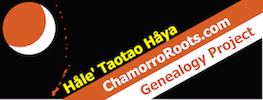
Aguiguan is a very difficult and challenging island to access. There are approximately 32 prehistoric sites documented. Prehistoric artifacts recovered on Aguiguan are dated to be as early as the pre-latte period before A.D. 800. However, the archeological evidence also supports the notion that the permanent occupation of Aguiguan likely occurred sometime after A.D. 1000 during the latte period; as also evidenced by the latte sets found on Aguiguan.
Aguiguan was one of the last islands to be conquered by the Spaniards in 1695. Some of the CHamoru people that resided on Tinian even fled to Aguiguan to seek refuge during the CHamoru-Spanish wars. Sadly, in the historical setting of this book, only two CHamorus were named: Maga’låhi Taga (pg.22) and an infant baptized on Aguiguan by Father San Vitores in August 1668 with the name Ignacia (pg.23).
Aguiguan, later, became more frequently referred to as “Goat Island.” Sometime after 1818, the residents of Tinian introduced goats to Aguiguan. Other than for fishing and goat hunting the island was seldomly visited during the Spanish colonization and pretty much silent on information under the German administration.
Under the administrative rule and colonization of the Japanese, they were more aggressive in pursuing economic expansion and opportunities under the sphere of Japan. Workers from Okinawa and laborers from Korea were brought into the Mariana islands to help meet those objectives. Aguiguan was primarily used by the Japanese for cultivating sugar cane fields.
As a result, there are CHamoru people with Okinawan and Korean ancestry from some of these workers/laborers.
In 1943, there were 356 people on Aguiguan. Over 40% were Korean laborers (mostly unmarried), while the remainder were Okinawan workers (some had families).
“Our knowledge of the plantation and plantation life on Aguiguan has been greatly increased by Mr. Joaquin S. Borja of Tinian. Mr. Borja, who kindly consented to be interviewed for this project, lived on Aguiguan as a small boy. He was born in 1936 and was 9 years old when the population was removed in 1945. Mr. Borja not only has his recollections but also a body of information imparted to him by his parents. At the time of the survey Mr. Borja's mother was still living but in ill-health and could not be interviewed. Mr. Borja's father was an Okinawan who married a local woman on Rota, which is where Joaquin was born. The father was later transferred to Aguiguan where he served as one of the winch operators at the landing complex. The family lived in one of the housing units at that site.”
Brian M. Butler.1992. An Archeological Survey of Aguiguan (Aguijan) Northern Mariana Islands.

